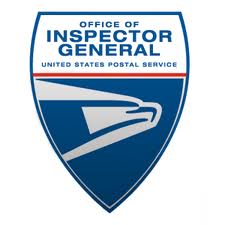USPS OIG Audit: Rural Delivery Operations – Mail Count and Timekeeping Processes
 U.S. Postal Service Rural Delivery Operations has about 112,000 rural letter carriers and associates delivering mail on 72,407 routes. Salaries and benefits total over $6 billion annually for these employees. Per the National Rural Letter Carriers’ Association’s National Labor Agreement, the mail count establishes compensation and workhours for carriers on rural routes. The mail count includes physically counting and recording the number and types of mailpieces by route. In the fiscal year 2013 mail count, management and carriers agreed to count 32,248 (44 percent) rural routes. Some routes, such as vacant regular routes, auxiliary routes, and routes assigned a right-hand drive vehicle, were mandated for the mail count. Carriers manually record their workhours on timecards daily and supervisors manually input carrier route time into a spreadsheet and into the Time and Attendance Collection System. Our objectives were to assess the rural delivery mail count and timekeeping processes.
U.S. Postal Service Rural Delivery Operations has about 112,000 rural letter carriers and associates delivering mail on 72,407 routes. Salaries and benefits total over $6 billion annually for these employees. Per the National Rural Letter Carriers’ Association’s National Labor Agreement, the mail count establishes compensation and workhours for carriers on rural routes. The mail count includes physically counting and recording the number and types of mailpieces by route. In the fiscal year 2013 mail count, management and carriers agreed to count 32,248 (44 percent) rural routes. Some routes, such as vacant regular routes, auxiliary routes, and routes assigned a right-hand drive vehicle, were mandated for the mail count. Carriers manually record their workhours on timecards daily and supervisors manually input carrier route time into a spreadsheet and into the Time and Attendance Collection System. Our objectives were to assess the rural delivery mail count and timekeeping processes.
WHAT THE OIG FOUND: The rural mail count process is generally effective. Management followed policies and procedures and the National Labor Agreement to ensure rural mail count results are collected, validated, and recorded accurately. The rural timekeeping process is generally effective to ensure that carriers are paid, but is inefficient. The process has redundant input and potential for errors and is not always performed daily. The manual timekeeping process exists due to a lack of both funding and previous senior management support for design and implementation of a new automated system. The Postal Service plans to pilot a new web-based rural timekeeping system to partially automate the process by directly uploading carriers’ workhours into the Time and Attendance Collection System at the end of each pay period. Fully automating the rural timekeeping process would improve operational oversight and supervisor productivity and save about $18.8 million annually.
WHAT THE OIG RECOMMENDED: We recommended the vice president, Delivery and Post Office Operations, in coordination with the vice president, Controller, develop a strategy to fully automate the rural timekeeping process
That’s all well and good except that they have cut so many jobs that overtime is abundant. Here in Boston We have been working 4 hours a night through Christmas and 2 hours all year in automation. So it seems on the outside the postal service is saving money that way but not really the overtime is crazy! $$$$$$
Reduce cost further by recognizing 6 day street delivery is a wasted cost. politicians have one concern and is doing whatever gets them reelected. Rural delivery based on evaluated route time per count is more cost effective than city delivery hourly rate overtime system.
5 day delivery makes cents. 6 day delivery should be provided only for Expedited delivery that customer pays to insure delivery within a time frame. UPS and FED X operate on this premise and is reflected in revenue as earnings and value of companies continue to increase.
The public service issue USPS declares is past time history that is no longer reveal ant in the 21st century.